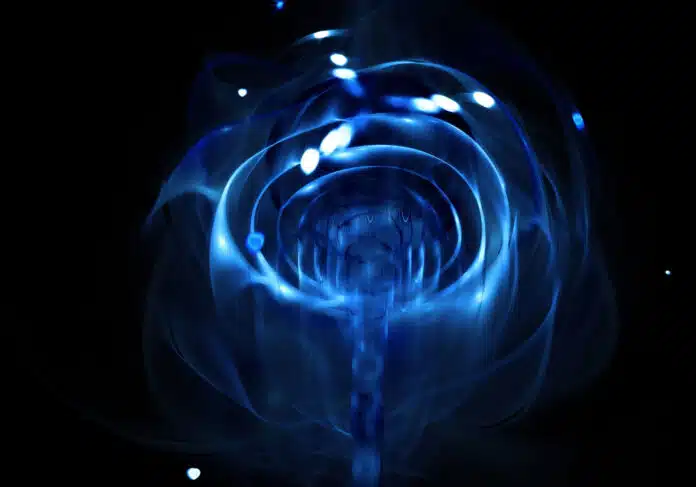
By Ashwini Sakharkar 15 Nov, 2024
Collected at: https://www.techexplorist.com/researchers-discover-new-route-quantum-spin-liquid-materials/92785/
Scientists have produced a new route to materials with complex ‘disordered’ magnetic properties at the quantum level for the first time. This innovative material, built on a framework of ruthenium, meets the criteria for the highly sought-after ‘Kitaev quantum spin liquid state’—a phenomenon that has intrigued researchers for decades.
The study, published by researchers from the University of Birmingham, represents a significant advancement toward the development and control of quantum materials that possess desirable new properties that diverge from classical physics. These materials offer a way to achieve magnetic behaviors that are distinct from typical ‘ferromagnets,’ which are organized around two magnetic poles.
Ferromagnets—such as the common bar magnets found on refrigerators or bulletin boards—contain electrons that interact with one another, each acting as a tiny magnet that attracts and repels, resulting in alignment in the same direction and generating the magnet’s strength.
In contrast, quantum spin liquid materials display magnetic characteristics that do not operate in this manner. Rather than exhibiting the well-ordered traits of ferromagnets, these materials are disordered, and the electrons within them are magnetically connected through a phenomenon known as quantum entanglement.
While quantum spin liquids have long fascinated theorists and researchers, experimental validation and natural occurrences have remained elusive—until now. In a groundbreaking study, scientists present a novel ruthenium-based material that paves the way for new explorations of these intriguing states of matter.
“This work is a really important step in understanding how we can engineer new materials that allow us to explore quantum states of matter. It opens up a large family of materials that have so far been underexplored and which could yield important clues about how we can engineer new magnetic properties for use in quantum applications,” Lead researcher Dr Lucy Clark explains.
Although there are several naturally occurring copper minerals and crystal structures where scientists suspect quantum spin liquid states could exist, definitive proof has been elusive due to the added structural complexities found in nature. The intricate nature of quantum spin liquids also presents challenges for theorists, as modeling yields numerous competing magnetic interactions that are hard to decipher, leading to disagreements within the physics community.
In 2009, theoretical physicist Alexei Kitaev developed a model that showcased some fundamental principles of quantum spin liquids, but the magnetic interactions it outlined required conditions that researchers have struggled to replicate experimentally, leading the materials to revert to a traditional magnetic ordering state.
This phenomenon is believed to be associated with the compact crystal structures of potential materials. The close packing of ions allows for direct interactions among them, which causes a return to magnetic order.
By utilizing specialized instruments at the UK’s ISIS Neutron and Muon Source, along with the Diamond Light Source, the team from Birmingham demonstrated that a newly discovered material with an open framework structure can adjust the interactions between the ruthenium metal ions, paving a pathway to the Kitaev quantum spin liquid state.
Crucially, the magnetic interactions generated within these more open structures are less intense than they could be, providing researchers with greater flexibility to fine-tune their specific behaviors.
“While this work has not led to a perfect Kitaev material, it has demonstrated a useful bridge between theory in this field and experimentation and opened up fruitful new areas for research,” added Dr Clark.
Journal reference:
- Abdeldaim, A.H., Gretarsson, H., Day, S.J. et al. Kitaev interactions through extended superexchange pathways in the jeff = 1/2 Ru3+ honeycomb magnet RuP3SiO11. Nature Communication (2024). DOI: 10.1038/s41467-024-53900-3

Leave a Reply